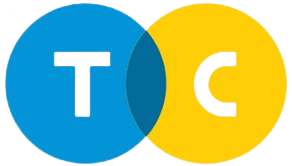Hologram technology is revolutionizing the way we learn by providing a more engaging and interactive way for students to visualize complex concepts and ideas. The technology uses laser technology to project 3D images into the air, creating a truly immersive and realistic experience. With the latest advancements in hologram technology, it’s possible to create high-resolution, life-like images that can be seen from multiple angles.
One of the most significant applications of hologram technology in education is in the field of science, technology, engineering, and mathematics (STEM) education. By using holographic displays, students can explore complex scientific concepts and models in a way that is both engaging and interactive. For instance, students can study the anatomy of the human body or explore the solar system in a way that is not possible with traditional 2D images.
Another application of hologram technology in education is in the field of history and social studies. By using holographic displays, students can explore historical events and landmarks in a way that is both realistic and engaging. For example, students can take virtual field trips to historical sites and landmarks, or learn about ancient civilizations in a way that brings the past to life.
Hologram technology is also being used in language education, where it can help students to visualize and understand new words and phrases. For example, students can learn about new vocabulary by interacting with 3D images of objects, animals, and places.
In addition to these benefits, hologram technology can also provide educators with valuable data and insights. By tracking student interactions and behavior in a holographic environment, educators can gain a deeper understanding of their students’ learning styles and tailor their teaching strategies accordingly.
Despite the many benefits of hologram technology in education, it’s important to keep in mind that it’s still a relatively new technology and can be difficult to implement correctly. It requires a high level of technical expertise and resources, which can be a barrier for some schools and educational institutions.
Another important aspect of hologram technology in education is the ability to create immersive and interactive virtual environments. This can be particularly useful for subjects such as architecture, engineering, and design, where students can explore and manipulate virtual models of buildings, structures, and other objects. In addition, hologram technology can also be used to create interactive and engaging simulations for subjects such as physics and chemistry, where students can explore and experiment with virtual models of physical phenomena.
In conclusion, hologram technology is changing the way we learn by providing a more engaging. An the interactive way for students to visualize complex concepts and ideas. With the latest advancements in hologram technology, it’s possible to create high-resolution, life-like images that can be seen from multiple angles. It has the potential to revolutionize STEM, history and social studies and language education. While it’s not without its challenges, educators who invest in hologram technology can reap significant rewards in terms of student engagement and retention.

